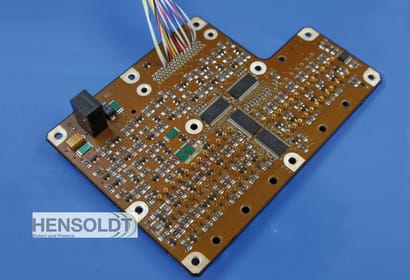 A DragonFly Pro system installed in a workshop setting.
A DragonFly Pro system installed in a workshop setting.
We recently sat down with Tim Sheehan, our Vice President of Global Sales & Customer Care, to discuss some of the most frequently asked questions from customers and prospects. The following blog is part two in our discussion with Tim and discusses the process for installing the Nano Dimension DragonFly Pro, as well as post-installation considerations (Part one here).
Q: My DragonFly Pro precision additive manufacturing system has been ordered. What do I need to do to prepare for its arrival?
Tim: Nano Dimension provides a comprehensive site preparation document, which describes what needs to be ready from materials and tools availability, room layout, office environment and more. But the process is not complex. In fact, the only item needed to be prepared in advance is a specific model of uninterruptible power supply (UPS), which has been tested and approved to work with our printer.
Q: Are there special electrical considerations when installing the DragonFly Pro?
Tim: The DragonFly Pro runs on the following specifications:
| Voltage |
Current |
Circuit Breaker |
| 220-230v, single phase, 50/60 Hz |
16 Amp |
20 Amp |
Customers should review their region’s electricity grid specifications and prepare equipment to adapt the DragonFly Pro if necessary.
Q. Do I need a clean room or a dedicated space?
Tim: In a word, no. The printer can be installed in a commercial office space. Our site preparation documentation outlines the requirements for office environments, including temperature and humidity ranges, that will assist in the proper execution of our precision systems performance.
Q: How much physical space should I allow – and why?
Tim: The printer’s physical size is 1.4m * 0.8m. Our recommendations are that the DragonFly Pro be located 1 meter from each wall to allow for easy servicing, and to ensure free and easy access to all of the printer’s doors.
Q. What is the optimal operating temperature range and humidity level for the DragonFly Pro?
Tim: We recommend the room temperature be between 18C-25C (64.4 to 77F) and humidity in the range of 30%-70%.
Q. How long does the set-up process usually take?
Tim: It takes about a day to physically set up the system, add in the inks, make adjustments and get it up and running. However, it’s a little misleading to say the full set-up process is a one-day job. Because the DragonFly Pro is a precision additive manufacturing solution printing electronics at the micron level, it is important that the operators are trained and the printer fully calibrated before use, so that they can ensure the system runs the way it’s intended to. Once all is set, the DragonFly Pro will print and test a simple sample board to determine that the printer is now ready for the customer’s print jobs.
Q: What happens if there is a power surge or power issue during printing? Can the process be resumed?
Tim: One of our requirements is that the printer be connected through a specific model of UPS, which allows the user to return to printing in case of a power issue.
Part One of this 2-part interview with Tim can be found here. It discusses the sales cycle for purchasing Nano Dimension’s award-winning additive manufacturing platform, the DragonFly Pro.
Tim will be available for meetings during the upcoming Formnext 2018 trade show in Frankfurt, Germany on 13-16th November 2018. Contact us now to schedule a meeting.
CONTACT US
